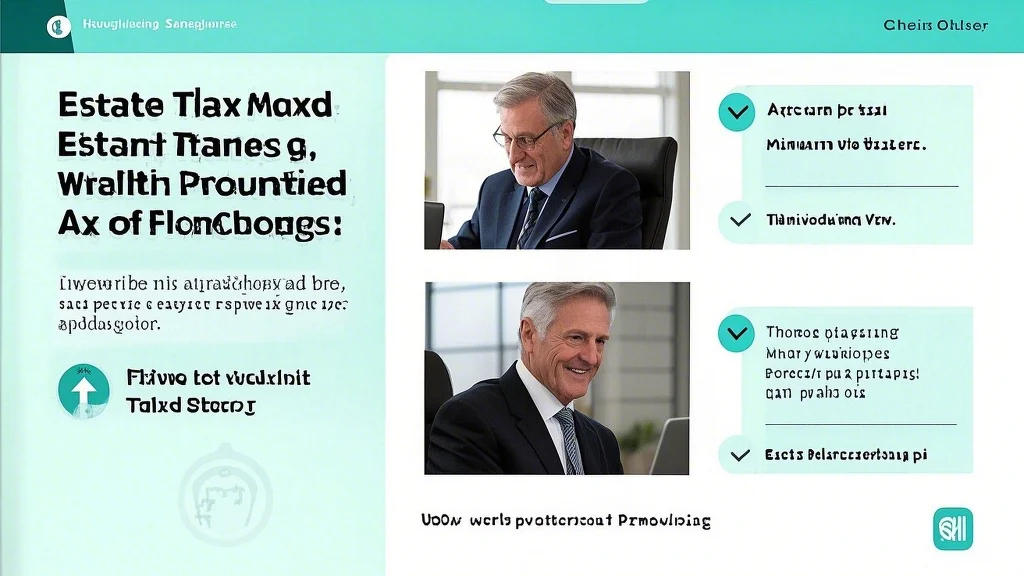Understanding Federal and State Estate Tax Thresholds
Effective estate tax planning begins with understanding the current tax landscape. For 2024, the federal estate tax exemption stands at $13.61 million per individual ($27.22 million for married couples), with amounts above this threshold taxed at rates up to 40%. However, these generous exemptions are scheduled to sunset after 2025, potentially reverting to pre-2018 levels of around $5 million adjusted for inflation. This looming change makes proactive planning particularly urgent for high-net-worth families. State-level estate taxes add another layer of complexity, with some states like Massachusetts and Oregon having exemptions as low as $1 million. These varying thresholds form the foundation of comprehensive tax-efficient estate planning strategies.
Many families mistakenly assume estate taxes won’t affect them, overlooking how quickly assets can accumulate when accounting for life insurance proceeds, retirement accounts, and appreciated real estate. A thorough wealth protection strategies review should include calculating your current net worth and projecting its growth over time. Remember that the IRS values assets at their fair market value at death, not their original purchase price. This means a $500,000 home bought decades ago could be worth millions today, potentially pushing your estate over exemption limits. Regular valuations of all assets should be part of any ongoing tax planning for estates process.
Lifetime Gifting Strategies to Reduce Taxable Estates
One of the most powerful tools in estate tax planning is the strategic use of lifetime gifts. The annual gift tax exclusion allows you to give up to $18,000 per recipient in 2024 ($36,000 for married couples) without counting against your lifetime exemption. These gifts can be cash, securities, or other assets, and when done consistently over years, can significantly reduce your taxable estate. More sophisticated inheritance tax strategies might involve direct payments of medical or educational expenses (which are unlimited if paid directly to institutions) or funding 529 college savings plans with five years’ worth of gifts at once.
For larger estates, leveraging the current high exemption amounts through substantial gifts represents a cornerstone of tax-efficient estate planning. Making these gifts before the scheduled exemption reduction in 2026 could preserve significant wealth for heirs. Techniques like spousal lifetime access trusts (SLATs) allow couples to remove assets from their estates while maintaining some indirect access. When implementing these wealth protection strategies, it’s crucial to consider both the tax implications and your personal cash flow needs, as gifts are generally irrevocable. Proper documentation and appraisal of non-cash gifts are also essential to avoid future disputes with the IRS.

Trust Structures for Asset Protection and Tax Efficiency
Various trust arrangements form the backbone of sophisticated estate tax planning strategies. Irrevocable life insurance trusts (ILITs) can remove life insurance proceeds from your taxable estate while providing liquidity to pay estate taxes. Qualified personal residence trusts (QPRTs) allow you to transfer homes to heirs at reduced gift tax values. These tools, when properly structured, are key components of comprehensive tax planning for estates that seek to preserve wealth across generations while minimizing tax burdens.
Dynasty trusts represent another advanced option in inheritance tax strategies, allowing assets to grow free of estate taxes for multiple generations in states that have abolished the rule against perpetuities. Charitable remainder trusts (CRTs) provide income streams during your lifetime while offering charitable deductions and eventual estate tax benefits. When implementing these tax-efficient estate planning tools, it’s essential to work with experienced estate attorneys who can navigate complex state-specific trust laws and ensure your documents achieve your intended goals without unintended consequences.
Business Succession and Estate Tax Considerations
Family-owned businesses present unique challenges in estate tax planning, often comprising the majority of an entrepreneur’s net worth. Proper succession planning must address both operational continuity and potential estate tax liabilities that could force a sale. The IRS provides special valuation discounts for minority interests in family businesses, which can be leveraged through careful wealth protection strategies. These discounts, typically ranging from 20-40%, reflect the lack of control and marketability of minority stakes and can significantly reduce taxable estate values.
Buy-sell agreements funded with life insurance are common tools in tax planning for estates with business interests. More sophisticated techniques like grantor retained annuity trusts (GRATs) can freeze the taxable value of rapidly appreciating business assets. For farmers and closely-held business owners, Section 6166 of the tax code allows estate taxes to be paid in installments over 15 years. These specialized inheritance tax strategies require careful coordination between your estate attorney, accountant, and business advisors to ensure both tax efficiency and business continuity.
Coordinating Retirement Accounts with Estate Plans
Retirement accounts often represent the most tax-inefficient assets in estate tax planning, facing potential income and estate taxes upon death. Naming the right beneficiaries and understanding the SECURE Act’s 10-year distribution rule are crucial for tax-efficient estate planning. For large traditional IRA balances, consider partial Roth conversions during lower-income years to reduce future tax burdens. Charitable beneficiaries can be ideal for retirement accounts, as charities pay no income tax on distributions, effectively eliminating both income and estate taxes on those assets.
Stretch IRA strategies may still be possible for certain eligible designated beneficiaries under the SECURE Act, making proper beneficiary designations a critical component of wealth protection strategies. Trusts as IRA beneficiaries require particular care to avoid accelerating distributions unnecessarily. When incorporating retirement accounts into your overall tax planning for estates, coordinate with your financial advisor to model different distribution scenarios and their impact on both your heirs’ tax situations and your estate’s liquidity needs.
Regular Review and Adaptation of Estate Plans
Estate plans aren’t “set it and forget it” documents – they require regular reviews as part of ongoing estate tax planning. Changes in tax laws, family circumstances (births, deaths, divorces), asset values, and state residency can all necessitate plan adjustments. A comprehensive tax-efficient estate planning review should occur at least every three years or after any major life event. This ensures your inheritance tax strategies remain aligned with current laws and your family’s evolving needs.
Digital assets present new challenges in modern wealth protection strategies, requiring specific language in estate documents to address cryptocurrency, online accounts, and intellectual property. International considerations, such as foreign assets or beneficiaries, add another layer of complexity to tax planning for estates. Working with a multidisciplinary team of estate attorneys, tax professionals, and financial advisors can help ensure all aspects of your plan work together cohesively to protect your legacy while minimizing tax burdens for your heirs.
